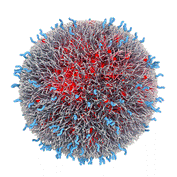Center, Biotechnology

Nebraska Center for Biotechnology: Faculty and Staff Publications
Document Type
Article
Date of this Version
9-13-2017
Citation
Plant Direct. 2017;1–14. https://doi.org/10.1101/ 131185
Abstract
Plant responses to the environment are shaped by external stimuli and internal signaling pathways. In both the model plant Arabidopsis thaliana (Arabidopsis) and crop species, circadian clock factors are critical for growth, flowering, and circadian rhythms. Outside of Arabidopsis, however, little is known about the molecular function of clock gene products. Therefore, we sought to compare the function of Brachypodium distachyon (Brachypodium) and Setaria viridis (Setaria) orthologs of EARLY FLOWERING 3, a key clock gene in Arabidopsis. To identify both cycling genes and putative ELF3 functional orthologs in Setaria, a circadian RNA-seq dataset and online query tool (Diel Explorer) were generated to explore expression profiles of Setaria genes under circadian conditions. The function of ELF3 orthologs from Arabidopsis, Brachypodium, and Setaria was tested for complementation of an elf3 mutation in Arabidopsis. We find that both monocot orthologs were capable of rescuing hypocotyl elongation, flowering time, and arrhythmic clock phenotypes. Using affinity purification and mass spectrometry, our data indicate that BdELF3 and SvELF3 could be integrated into similar complexes in vivo as AtELF3. Thus, we find that, despite 180 million years of separation, BdELF3 and SvELF3 can functionally complement loss of ELF3 at the molecular and physiological level.


Comments
open access article